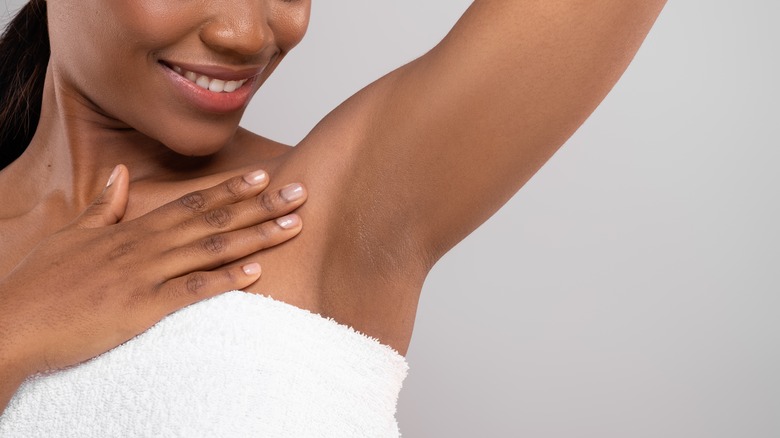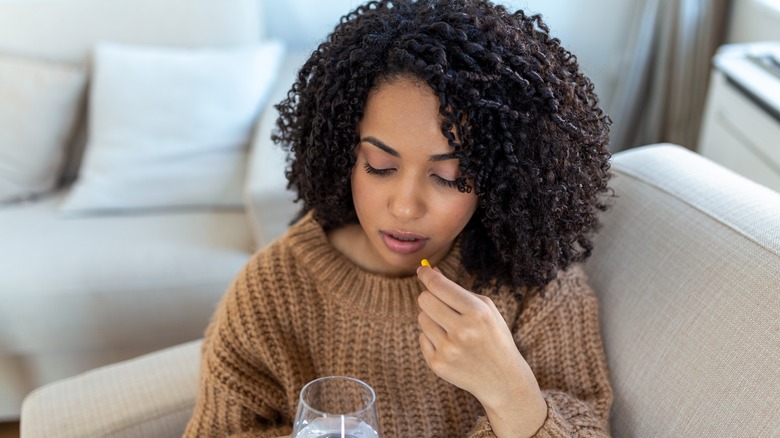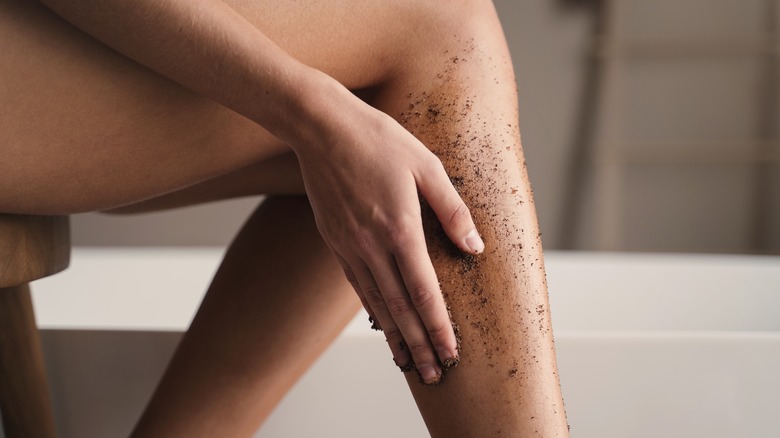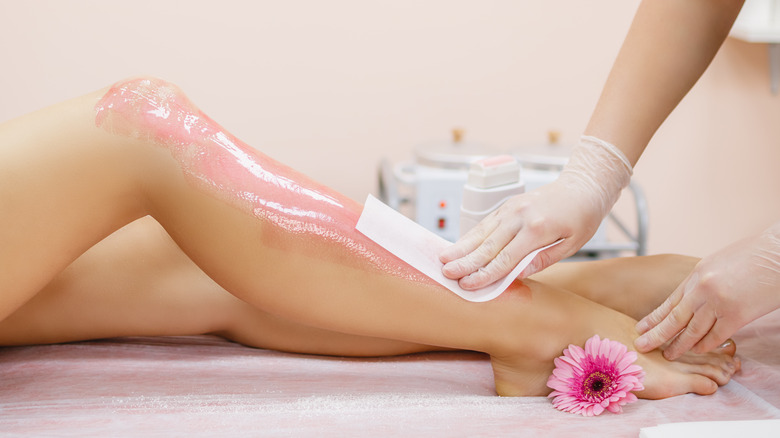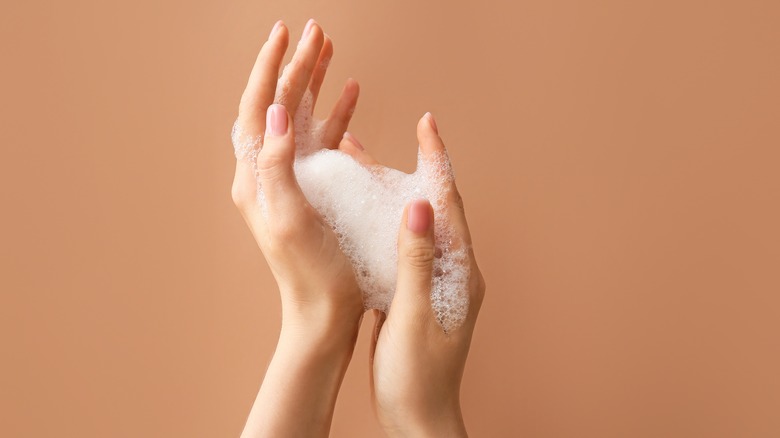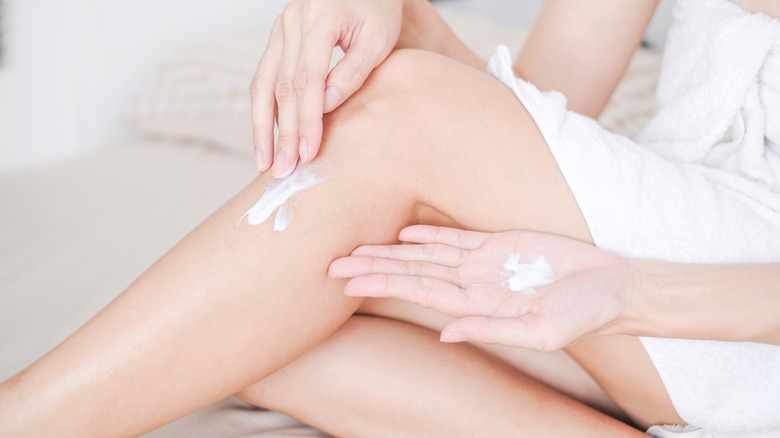Key Tips For Prepping Your Skin For Waxing
Let's face it: Waxing isn't enjoyable. However, it is something many of us do because of its amazing benefits. If you hate shaving, want fewer ingrown hairs, or just want a seamless hair removal experience, waxing is probably your best bet for getting rid of any hair on your body. While waxing has plenty of benefits, it also has risks that are particularly relevant when you go into an appointment unprepared.
Dermatologist Dr. Deirdre O'Boyle Hooper tells Romper that "there's the risk of infection and the risk of irritation or inflammation" that comes with waxing. The top layer of skin is often also ripped away with your hair, which leaves your skin vulnerable to the outside world. Not to mention, extra irritation can occur if you don't consider your skin from the inside out.
No matter what area of your body is being waxed, you are at risk for raw and irritated skin that can turn into something much worse. Luckily, with proper preparation, you can mitigate your risk of any negative effects. A great wax begins before your appointment even starts. We have curated five key tips for prepping your skin for your next wax.
Watch what you ingest
We often forget that what we put inside our bodies can affect our skin. Unfortunately, hair ripping out via wax is painful, but if you are looking to experience less pain during your wax, there are some things you should and should not be consuming. Drinking caffeine or alcohol makes the skin more sensitive, so it should be avoided on the day of your waxing appointment, per Painless Waxing Boutique.
If you are on medications that make your skin more sensitive than normal, such as Accutane for the treatment of acne, you should consult with a doctor before booking a waxing session. Some people say that taking pain relievers helps minimize pain during their waxing appointments. Esthetician Nandi Wagner tells Byrdie that people should "take a pain reliever like Advil and Aleve, but avoid aspirin, as it will induce blood flow."
Exfoliate
One to two days before your wax, you should exfoliate the area with a scrub, mitt, or loofah. This will remove dead skin cells, making it easier for the wax to stick to your hairs from the root, which will prevent hair breakage during the waxing process. If you do not exfoliate before your wax appointment, you may not only experience breakage, but also more serious problems, such as ingrown hairs or even acne breakouts (via Starpil). Regularly exfoliate between waxing sessions as well to help achieve the best possible results.
As a rule of thumb, you should always exfoliate before hair removal — even when you're shaving!
Ensure your hair is the correct length
For the best wax possible, your hair needs to be at a certain length. Hair should be at least a ¼ inch long in order to be waxed, as this will ensure that the wax is able to effectively grip enough hair for an efficient wax (via Pure Skin Pro). If you are getting a wax for the first time, your hair should be grown out for at least three weeks before heading to your appointment.
Just like there is a minimum hair length for waxing, there is also a maximum. If your hair is more than a ½ inch long, it may need to be trimmed down before the waxing process begins.
Wash the area before waxing
You should attend your wax appointment freshly washed for optimal results. This will remove your skin of any dirt, excess makeup, or sweat from the day. Without washing before your wax, you are putting your skin at a greater risk of irritation and ingrown hairs (via Healthline).
If your skin is oily, there's also the chance that the hairs won't stick to the wax, leaving you with an uneven result. After washing, ensure that the area is dry, as wax won't stick to wet hair either. Not to mention, your wax results may not be as great if the area is dirty.
Avoid moisturizer
In most cases, moisturizer is a great way to hydrate the skin, and you should definitely moisturize every day leading up to your wax to get your skin as soft as possible. But before your wax, you should avoid using moisturizer or any other product on your skin, according to Essential Beauty. If there are traces of product on your skin, it's likely your esthetician will ask you to wipe it off. This is because moiturizers and other products — even non-oily solutions — will prevent the wax from sticking to your hairs.
However, once your wax is complete, a vital part of aftercare is applying SPF and a thin later of vaseline to help soothe the area. "It is always best to ditch the tight-fit clothing post wax to avoid any irritation," esthetician Dana Pellegrino tells Byrdie. Immediately putting a tight covering over your waxed area can cause ingrown hairs and irritation. Avoid spraying fragrances on any freshly waxed area as well.
